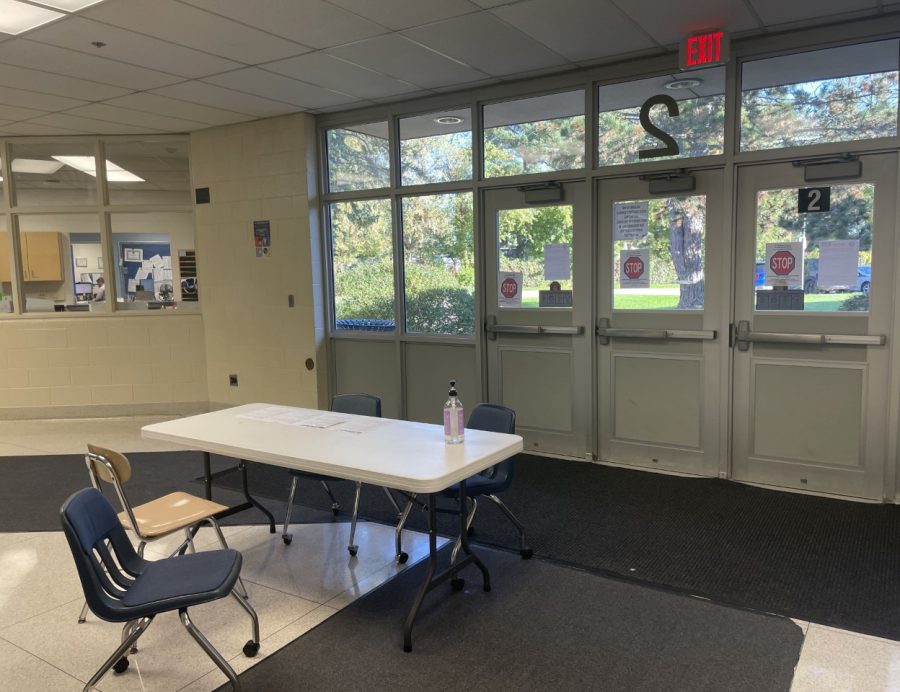Brighten the future
Investing in better lighting for the school would create a better, healthier learning environment
Door two lets natural light in as students pass in the halls. Once they pass, they are met with the usual, blinking fluorescent lights of the building.
Walking out of the school doors at the end of the day provides the sweetest relief, but then there’s a realization: a headache follows a student home.
Sure, a headache isn’t presented as a main health concern, but other issues exist beyond the pandemic. A student’s every day well-being still holds value, aside from if they’re coughing or not. Many factors cause headaches, like stress and blue light, but those things aren’t as easy to factor out of a student’s life. Artificial light in the building should be replaced.
Since natural sunlight is mostly absent from the building thanks to having close to zero windows, the school relies on fluorescent light to light up the classrooms. This creates problems for those who are prone to migraines. There is a subtle flicker, sometimes imperceivable, brought on by fluorescent lights which trigger headaches and sometimes even seizures, according to LED 2. Learning environments should be safe and healthy, but there is an invisible enemy present every day: fluorescent lights and their flicker.
It is also known fluorescent lights emit UV radiation which can cause eye diseases and cataracts, according to Energy Performance Lighting. How can the sc]hool expect students to be productive if they’re actively risking their health every day they walk through the doors? Even though the health risks are low, it is still a risk. Technology has improved so much over the years, there is no reason the school should keep a health threat in the building.
Some alternatives include natural lighting, and this can be accomplished by placing more windows. After all, the lack of natural light can lead to body dysfunction as time passes, according to LED2. Even though this would be the best solution, it may not be the most viable solution due to the circular structure of the building, however, skylights are an option. Having natural light, even if it’s ust in hallways, would decrease health risks immensely and lead to a better, safer learning environment.
If placing skylights isn’t in the budget, then replacing fluorescent lights with LEDs would be the next greatest option. They don’t flicker and they are very energy-efficient with little to no maintenance required, according to U.S. Energy Recovery. LEDs are safer and provide soft lighting which would greatly improve the well-being of students since their headaches would be less frequent, and they would be in a healthier and happier mindset to complete homework and be productive.
Your donation will support the student journalists of Eisenhower High School. Your contribution will allow us to purchase equipment and cover our annual website hosting costs.






